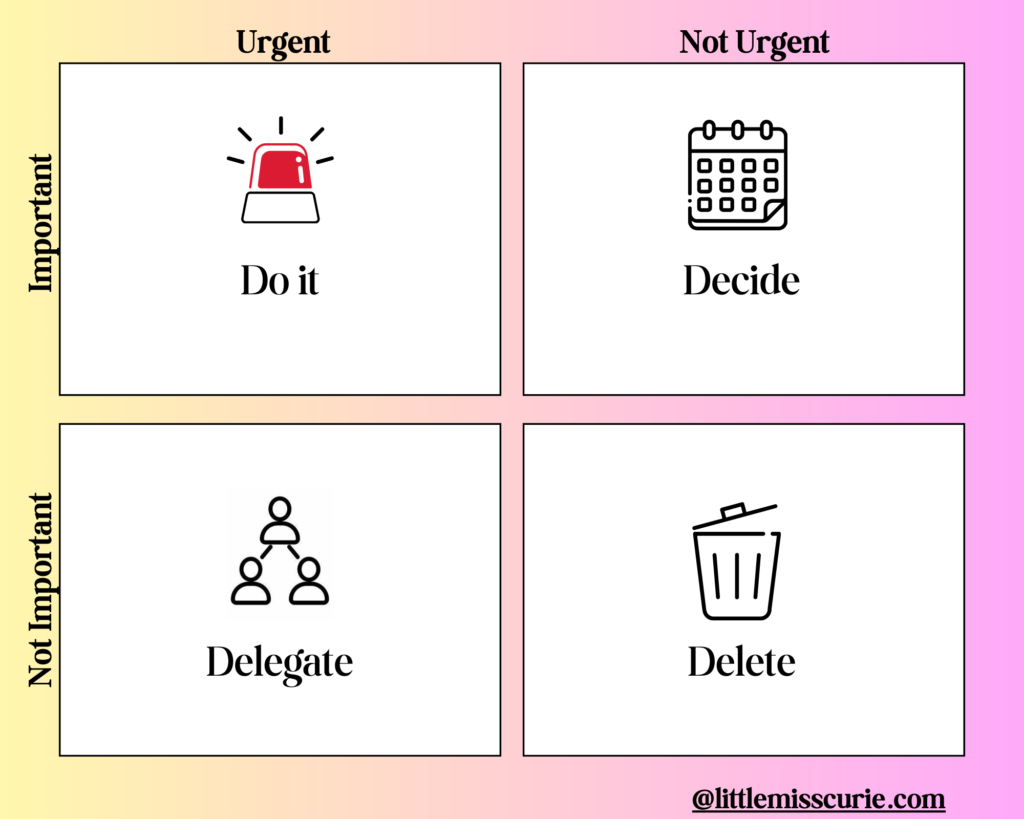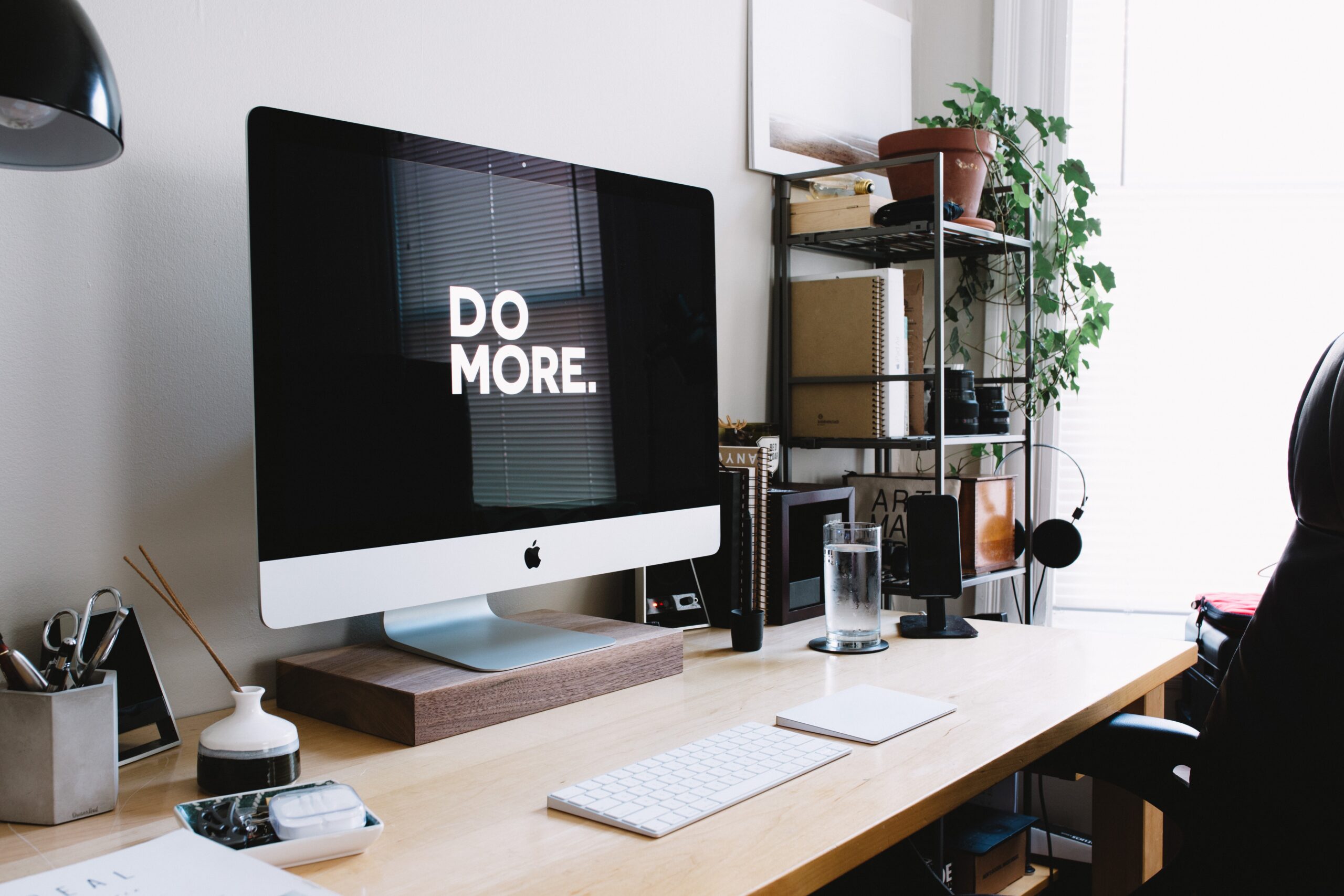So I was recently talking to my older sister about how different our college experiences are so far- different majors, different age groups, different...
This post features the best productivity frameworks for college students.
I know for a fact that I’m not the only one sick of school!
Like wanting to throw up kind of sick.
And this is no surprise because college is exhausting
Along with classes, we’ve also got extracurriculars, exams, bills and our barely there social lives to balance (speaking for myself). Some of us even have kids!
So yeah, it can be overwhelming.
But this is exactly why you need to develop a stable productivity routine to maximize your time.
As college students, our productive energy is our most precious commodity. And really, there’s only so much that Keurig can do before we burn ourselves out.
With a stable productivity regimen though, you’ll be better able to maintain focus, stay organised daily and hopefully stay ahead of tasks before that one professor starts doing too much (ifykyk)
The thing is, with so many of them to choose from it’s hard to even know where to start.
Lucky for you, I’ve listed some of the most popular ones down below, along with some tips on selecting the best system for your needs.
Tips on selecting the best productivity system for your personalized journey
1) Reflect- I don’t even think it’s necessary for me to say this but you gotta know yourself. What are your strengths? Weaknesses? What are you trying to achieve?
I recommend you give your habits and patterns a good and thorough examination before trying to figure out what system would work for you.
2) Experiment- Trial and error is the key to success in everything. Don’t be afraid to try one system and switch to another if it doesn’t work. What really matters is you and your time, if it’s not working, cut your losses and move on.
3) Understand the basics- Each framework has its own techniques and principles to familiarize yourself with. This will ensure you experience the full effects of each system and help you get the best results.
4) Consider your tool preferences—Everyone works differently and has different ways of doing things. Do you prefer digital or paper-based systems? A combo of both?
Just remember that it all depends on you. As long as you can customize to suit yourself you’re good.
5) Complex or not- I’m a simple girl, and I personally don’t enjoy anything that stresses me out, so the more complex systems are a no-go for me. But if you’re someone who likes complexity and challenges, then you might prefer the more complex systems.
Either way, it’s not a one size fits all so choose what’s best for you!
Here are the best productivity frameworks to help you increase your productivity…
The Pomodoro technique
If you’re one to be easily distracted, the Pomodoro technique might be your savior.
It’s a method that involves segmenting your work into manageable 25-minute sessions called Pomodoros. The first 3 Pomodoros are followed by short breaks of 5 minutes while the fourth is usually followed by a half-hour break.
The Pomodoro Technique is designed to prevent burnout and minimize the overwhelm we naturally feel when faced with large, important tasks.
If you’re someone who’s prone to procrastination, I highly recommend you try this method! You’ll be surprised how convincing “It’s only 25 minutes” can be when you have to tackle the hard tasks you’ve been putting off…
The Eisenhower Matrix
The Eisenhower Matrix is a simple task prioritization system modelled after former U.S. president Dwight D. Eisenhower.
It involves the separation of tasks based on their urgency and importance and will help you figure out what needs your immediate attention and what can wait.
In practice, a typical matrix has four columns: Urgent and Important, Urgent and Not Important, Important and Not Urgent, and finally, Not Important and Not Urgent (see graphic below).

When tasks are divided using this method, it helps you to prioritize them in a structured manner and to allocate your time efficiently.
This is especially helpful for you as a college student because it can be easily adapted for assignments and just about any other task you’ll need to get done. (Pro tip: Combine this with the Pomodoro technique; you’ll be surprised how much you get done)
Time Blocking
Arguably the easiest method on this list to implement, time blocking is more of an art than a science. It involves reserving specific periods for specific tasks and objectives.
As students, our days usually consist of different time blocks for various activities such as classes and study periods, which means this method is ideal for our use.
It’s important to note, however, that this system may not be applicable in other facets of your life and may be more effective when combined with other systems such as the Eisenhower matrix.
Getting Things Done Method

Developed by Mr. David Allen the Getting Things Done productivity system is a method of streamlining and dismantling tasks into small manageable steps to make them less intimidating for you to complete.
To understand how this method can be effective, you must first understand how it works. This process in its basest form involves 5 steps; capture, clarify, organize, review, and engage.
The capture stage is where you collect information about all your commitments and outstanding tasks; think To-do lists.
Clarifying involves breaking tasks into smaller objectives. Your goal with this step is to answer 3 questions: What? Why? And How?
The organization phase involves the streamlining and grouping of related tasks in order to improve clarity and provide structure to your actions. A category, for example, could be ‘Extracurriculars’ where you put any activity that is related to these activities.
Reviewing involves updating your To-do list with tasks to ensure you are on top of all the things you need to do.
The final stage, Engage, is the act of completing the necessary tasks as set out in the previous stages.
The Eat-the-Frog Method
What if instead of putting off that dissertation you did it before everything else? And those Chemistry labs? That is the basic idea behind the Eat-the-Frog Method, and I most certainly can see its appeal.
This method involves tackling the hardest tasks first when your energy levels and focus are at their highest.
The idea is that by ‘eating the frog’ ie completing the hardest tasks first, you’ll have the momentum and self-confidence to complete all other minor tasks, or at the very least would’ve put your best foot forward in the completion of your major objectives.
And there you have it! Remember that you can curate your own system to fit your needs using some versions of these systems.
The Eisenhower matrix and the Pomodoro technique work very well together and are huge parts of my own productivity system. Don’t be afraid to mix and match. Know that your goal is to maximize your time and efficiency and don’t be afraid to make tweaks along the way.

